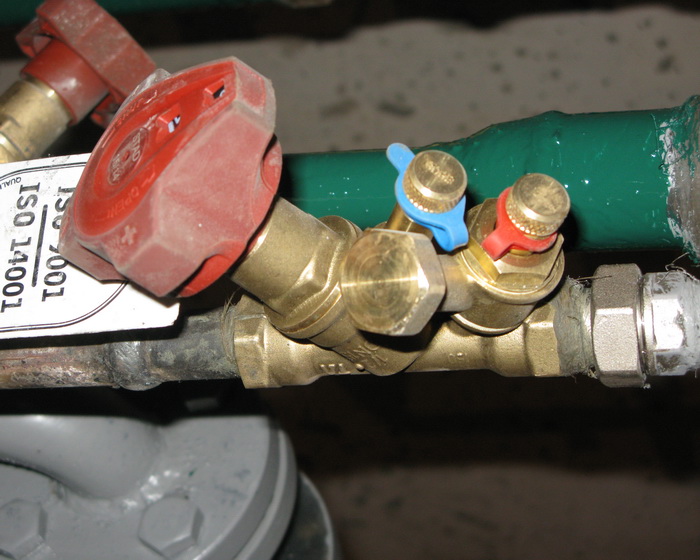Veuillez ne pas bloquer les publicités sur notre site. Les clics sur les annonces nous aident à exister, à nous développer et à devenir plus utiles pour vous !
Installation de la vanne à globe
- La vanne à globe peut être installée dans n'importe quelle position par rapport à l'horizontale, à condition qu'un accès libre soit garanti pour l'entretien et les réparations.
- Le sens de l'écoulement de l'eau à travers la vanne doit correspondre à la flèche sur le corps. Une utilisation prolongée avec un sens de circulation inverse peut entraîner la rupture de l'obturateur.
- Les tuyaux raccordés doivent être coaxiaux, et le corps de la vanne ne doit pas être soumis à des contraintes de torsion, d'étirement, de flexion ou de compression.
- Il est interdit d'installer des supports directement sous le corps de la vanne.
- L'extrémité du filetage du tuyau ne doit pas s'enfoncer dans l'extrémité du filetage de la vanne.
- Pour sceller le raccord fileté, vous pouvez utiliser : du lin, du ruban téflon, un scellant ou de la colle.
- Les fuites à travers le raccord fileté ou la tige de la vanne ne sont pas autorisées.
- Les vannes à globe en fonte ne doivent pas être installées sur des tuyaux soumis à des vibrations.
- Il est interdit d'effectuer des travaux de soudage à proximité de la vanne à globe.
- Après l'installation, des tests hydrauliques de la section doivent être effectués. La pression d'essai ne doit pas dépasser la pression d'essai définie pour chacun des éléments testés. Pendant les tests hydrauliques, les vannes d'arrêt, à l'exception des vannes de vidange et d'isolement, doivent être entièrement ouvertes.
Procédure de conditionnement du raccord fileté
1. Prenez une mèche de fibres de lin avec un nombre de fils tel que son diamètre en torsion soit à peu près égal à la profondeur du filetage. La longueur de la mèche doit permettre un nombre d'enroulements de 1,5 à 2 fois le nombre de filets.
2. En reculant d'environ 50 à 70 mm depuis le début de la mèche, tournez-la légèrement et placez-la dans le premier filet du filetage, puis enroulez fermement la longue branche de la mèche dans le sens des aiguilles d'une montre dans chaque filet.
3. En atteignant l'extrémité du filetage, continuez à enrouler avec une deuxième couche, en déplaçant les enroulements vers le début du filetage. La longueur de la deuxième couche d'enroulement doit être d'environ 2/3 de la longueur du filetage.
4. Enroulez l'extrémité restante de la mèche (50-70 mm) de la même manière dans le sens des aiguilles d'une montre, de l'extrémité du filetage jusqu'à son début.
5. Appliquez une couche de scellant sur la surface de l'enroulement.
6. Vissez les éléments de connexion à la main. Avec un conditionnement correct, l'élément monté doit être vissé de 1,5 à 2 tours.
7. Continuez à visser l'élément avec une clé ou un couplemètre. Si l'élément monté doit être placé dans une position particulière, terminez le vissage dans la position souhaitée.
Avec un conditionnement correct, l'effort de serrage ne doit pas dépasser le couple indiqué ci-dessous :
| DN15 | DN20 | DN25 | DN32 | DN40 | DN50 | DN65 | DN80 | DN100 |
|---|---|---|---|---|---|---|---|---|
| 70 Nm | 95 Nm | 120 Nm | 150 Nm | 190 Nm | 230 Nm | 280 Nm | 350 Nm | 400 Nm |
question : commentaire : retour
304
 Catalogue de
Catalogue de de vannes à globe
Valtec RUS
ГОСТ
ГОСТ
ГОСТ
Oventrop
Honeywell - Resideo
Danfoss
Danfoss
Herz
Herz
Herz
ARI Armaturen
Danfoss
Zetkama
Oventrop
Oventrop
Oventrop
Honeywell - Resideo








